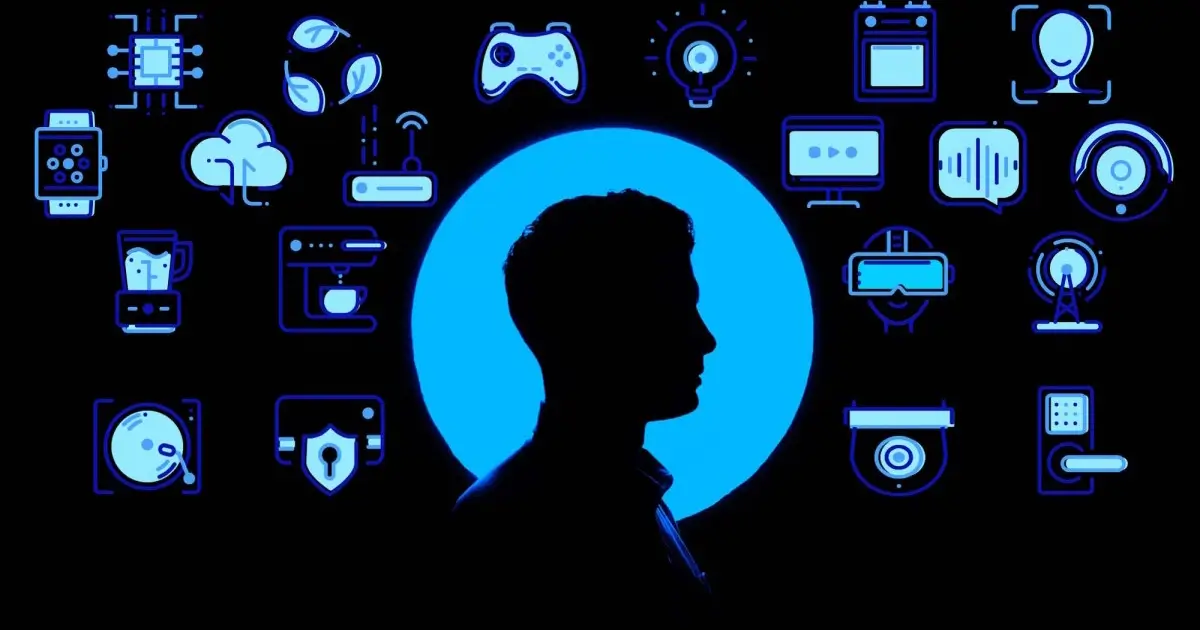The smart home has become a hot topic, and its development must go through several stages. At present, many manufacturers and developers are committed to the R&D and market operation of smart home. However, users still have criticism of smart home. Now, Ebee Tech also makes some reflections and explorations on the development of smart home.
the Development Stage of Smart Home
Smart home is a very popular Internet of Things industry. Since Apple released homekit and Google acquired Nest, smart home have completely exploded.
The smart home industry can be divided into three stages: single-product connection, object linkage and platform integration. At present, the smart home industry is in the second stage.
Stage 1: Single Product Connection
At this stage, there are many products, which are more suitable to be called intelligent hardware than single products. At this stage, the stickiness of the smart home is very low, and the initial freshness will gradually disappear after several times of use.
Common products include: intelligent lamps, intelligent door locks, intelligent speakers, intelligent sockets, intelligent refrigerators, intelligent curtains, intelligent washing machines, intelligent air conditioners, intelligent sockets, intelligent rice cookers, and intelligent sweeping robots.
This stage is a simple connection between things and people.
Stage 2: Linkage of Things
In this stage, the enterprise integrates all its single products, so that the products can be linked. For example, when the smart door lock is opened, the light automatically lights up.
In addition to the enterprise’s own integration, the integrator of smart home can integrate other third-party products (such as general communication modules) into the enterprise’s platform by using an enterprise’s open platform (such as IFTTT), and provide customized linkage scenarios for end users. In this stage, with the efforts of some manufacturers and integrators, things are connected together.
Stage 3: Platform Integration
According to the unified standard, the single products of each enterprise can be compatible with each other, which has not been developed to this stage. That is, the gateway from Company A can control the light from Company B, and the sensor of Company C can command the sweeping robot from Company D to clean.
This stage requires the interconnection of all things. The real connection does not depend on a certain integrator or a certain manufacturer, but through a certain protocol to complete the interconnection of all things.
At present, there is no general protocol or platform to complete the interconnection of everything or smart home products. For example, although WiFi and Bluetooth are shared globally, they cannot be unified due to their own reasons (the former has high power consumption and limited devices, and the latter only supported mesh networks recently, which is not yet popular).
Current Situation of Smart Home
At present, the smart home market is polarized: smart home manufacturers are very active, and real estate companies, home appliance companies, Internet companies and AI companies have entered the industry. But on the consumer side, there are still many users who can’t accept it.
According to relevant data, at present, the penetration rate of smart home in European and American countries has exceeded 35%, that in Japan and South Korea has exceeded 25%, while that in China has not reached 5%.
Consumer Part
- Difficult decision-making. As we all know, the purchase decision-making approach of hardware products is longer and more complex than that of Internet products, and once hardware is selected, the cost of replacement is very high. This leads to the high complexity of decision-making when customers choose smart home products. These can not be changed through market guidance and education. Even though many companies have provided smart home model rooms, it is still difficult to improve the transaction rate.
- High price. The price of smart home products is still very high. This reason also leads to the decline of customers’ purchase desire in disguise, which makes smart home become the plaything of wealthy people.
- Difficult for consumers to access. Some smart home products are only sold through Internet channels, and there are few opportunities for offline ordinary consumers. In addition, there is a big gap between the product information learned through the network and the real product experience, which makes many consumers’ understanding of smart home products like a moon in the sky, visible but intangible, so the purchase intention is relatively low.
- Unintelligent. Another part of the reason why consumers don’t buy is that the “smart” in consumers’ minds is far from the “smart” provided by the market. For example, many communities are equipped with access control, visual intercom, elevator control system and parking management system, and then nominal themselves as smart communities.
Manufacturer Part
At present, there are many smart home manufacturers. Generally speaking, they can be divided into two categories. One is to develop intelligent hardware / single products, first make single products, then make an app to manage all single products, and then evolve into a system; the other is the smart home system manufacturer, build its own system/platform, and then connect with the products of third-party manufacturers.
the Future of Smart Home
The future development of smart home, is the most worth thinking part. We have the following views.
Multimodality
It must be admitted that smart home is different from other AIoT industries in that it requires multimodal interaction and multimodal collaboration (between things).
So, what is multimodality?
The so-called multimodal interaction refers to the interaction after the combination of various ontology interaction means, such as integrating multiple senses, such as text, voice, vision, action, environment, etc.
Human is a typical example of multimodal interaction. In the process of human to human communication, expression, gesture, hug, touch and even smell all play an irreplaceable role in the process of information exchange.
Obviously, the human-computer interaction of smart home is bound to be more than one mode of voice, but requires multi-mode interaction in parallel. For example, if a smart speaker sees that a person is not at home, it doesn’t need to respond to the wake-up words mistakenly released in the TV at all, or even turn itself to sleeping mode. If a robot feels that the owner is watching it, it may actively greet the owner and ask if it needs help.
There is no doubt that multimodal processing needs to introduce the common analysis and calculation of multi-sensor data, which includes not only one-dimensional voice data, but also two-dimensional data such as camera image and thermal sensing image. All of these data processing needs the ability of local AI, which also puts forward a strong demand for edge computing.
Identity Authentication
At present, smart home systems generally can not identify the user’s identity, but some smart products can identify it.
At present, the identity can be confirmed by smart door lock or camera, but the smart door lock is only at the entrance and exit, and the camera is generally used for the perimeter and entrance (although there are also users who have required a large number of indoor monitoring cameras). So if it’s indoors, how can smart devices identify users?
People generally recognize people through hearing and vision.
In the smart home system, there are many devices that can identify users, such as TVs with cameras and smart speakers.
There are many scenarios for identification. For example, when you come home, the background music or smart sound, including lighting, will be adjusted according to your personal preferences. This adjustment is based on your daily behavior, gender, hobbies, return time, weather and other factors, combined with specific dates (birthdays, anniversaries, etc.) through self-learning, to achieve the purpose of personalized customization.
Another scenario is related to security.
At night, if you get up to move, the smart home system can recognize that you are active, the security sensors near your active area will be automatically shielded, and when you leave the area, the smart home system will be unblocked. The advantage of doing so is to prevent you from manually deploying and withdrawing defense.
Geographic Location
Geographic location includes determining the distance between the user and her/his home through his mobile phone, and also including the location of the user in the house. This is conducive to the realization of more customized functions.
By giving the intelligent home system a 3D modeling function, it can master the structure of the whole home. It can share the structure data with other devices, such as floor sweeper robots, smart speakers and other mobile devices, to realize the indoor equipment location.
When you are cooking in the kitchen while listening to the music played by the smart speaker, the smart speaker suddenly inserts a voice “strangers come to visit the front door”, and the screen of the smart speaker displays the door monitoring image.
You can see through the monitoring image that it was a neighbor or a friend, or even a takeaway, express delivery hero, etc.
You say to the smart speaker, open the door for him to come in or say to the smart speaker, “Express brother, help me put the express at the door, and I’ll get it later”.
At this time, the smart speaker will inform the person waiting at the door through the doorbell (assuming with voice function).
Similarly, if the user is geographically positioned to watch TV in the living room, a small window will appear on the living room TV to display the door monitoring, and the smart speaker in the living room will prompt “someone is visiting outside the door” through voice, and the TV in other rooms and the smart speaker will not give corresponding prompt, even when multiple TV and smart speakers are used at the same time, the smart home system can determine where the TV or smart speaker should give the prompt (for example, young people first, old people and children second).
If no one is detected in the room, when someone rings the doorbell, neither the TV nor the smart speaker will give a hint of someone visiting.
Data Analysis and Feedback Capability
Smart home is for users, in addition to the existing functional services, it should also be able to collect data for analysis and find deeper problems. The statistics of real-time monitoring data can often find the details ignored by human beings.
For example, the smart kitchen system can count the user’s eating habits, collect the user’s nutritional intake for a period of time, and then combine the medical data to feed back the user’s physical health and nutritional meal suggestions. Health management has become an increasingly important discipline.
It can be concluded that intelligent hardware or intelligent system must actively analyze the data generated by the device or the system, and provide relevant suggestions to users. This will be important for smart home in the future.
Privacy and Data Protection
Because smart devices or smart systems keep a large amount of personal data of users, and both smart devices and smart systems need to communicate with the cloud platform on a regular basis, if the communication content is obtained by illegal elements, it may be used by some people with ulterior motives.
For this reason, every manufacturer should effectively protect the data – whether it is in the process of data transmission, the cloud platform where the data is stored or the device that generates the data.
Last but not least, smart home will enter every home. This is the trend in the future. Hope smart home can bring us more imagination space!


